On May 11, The College of Liberal Arts and Sciences at Arizona State University will recognize its highest-achieving students from the social sciences, natural sciences and humanities at the spring 2022 convocation.
Each semester, departments and schools within The College select outstanding students who have demonstrated a steadfast commitment to academic excellence during their time at ASU. These students will be awarded a prestigious Dean’s Medal in honor of their scholastic achievements.
Meet the outstanding Dean’s Medalist awardees from The College for spring 2022.
MORE: Read about some of ASU’s other spring graduates.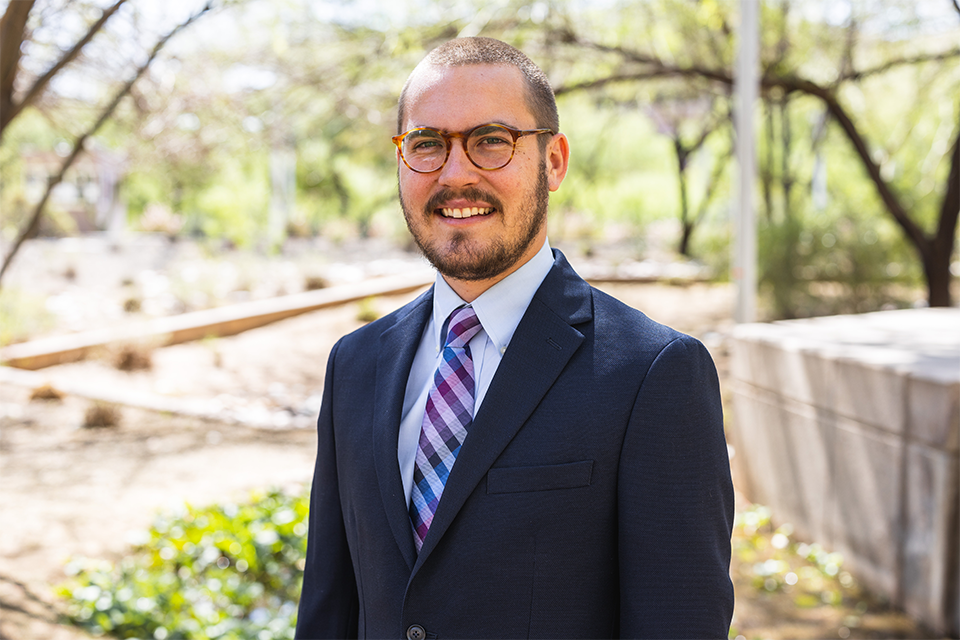
Dean’s Medal: School of Civic and Economic Thought and Leadership
Major: Civic and economic thought and leadership
Minor: History
Abbott is a Barrett, The Honors College student with a passion for history and education.
During his time at ASU, Abbott played a pivotal role in founding the School of Civic and Economic Thought and Leadership Student Assembly. He has been engaged in numerous research projects, working with faculty and students on the Arizona Constitution Project as well as topics including religion, conflict and immigration.
After graduation, Abbott will participate in a fellowship program at the University of Notre Dame that involves coursework and experience in the high school classroom. He aspires to teach high school social studies.
Dean’s Medal: School of Life Sciences
Major: Biological sciences (neurobiology, physiology and behavior)
Minor: Civic and economic thought and leadership
During her time at ASU, Afshari was deeply involved in scientific research, spending time studying developmental neurobiology, mathematical neuro-oncology and neurosurgery. Her contributions to these projects resulted in the co-authorship of at least four scientific manuscripts.
Afshari served as the director of health and wellness for the undergraduate student government, where she successfully implemented a program that offers free menstrual products on campus. In this capacity, she also illustrated and published an interactive COVID-19 guide for children in Arizona as vaccinations became available.
Afshari’s artistic talents are also exhibited on the Tempe campus in the form of a painting commissioned by the School of Civic and Economic Thought and Leadership that hangs permanently in Coor Hall.
After graduation, Afshari will participate in research at Stanford Medical School and will teach biology with Teach for America. She hopes to inspire the next generation of scientists by reciprocating the compassionate mentorship that guided her throughout her academic journey.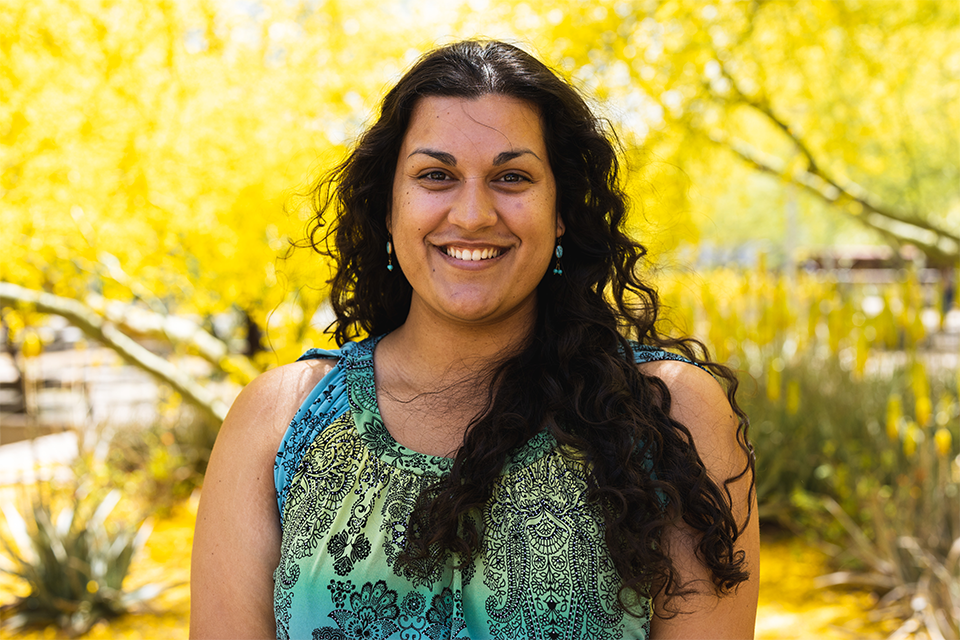
Dean’s Medal: School of Earth and Space Exploration
Major: Earth and space exploration
Minor: Biochemistry
Certificate: Field geology
Alexander is a Barrett student who has left a memorable impression on her peers, professors and numerous School of Earth and Space Exploration faculty.
During her time at ASU, Alexander worked in Everett Shock’s lab evaluating spatial and temporal variability in hot spring chemistry by synthesizing 20 years of data. Her efforts to bring new mapping and data management methods to the group’s Yellowstone National Park research have proven inspiring, and several graduate students in the group have benefited from her contributions.
Alexander also participated in the NASA Space Grant Internship, where she created a map geodatabase and generated 3D models of regions of Yellowstone for geochemical modeling.
After graduation, she will pursue a graduate program to learn more about the interaction between the geomorphology of landscapes and the geochemistry of hydrothermal systems.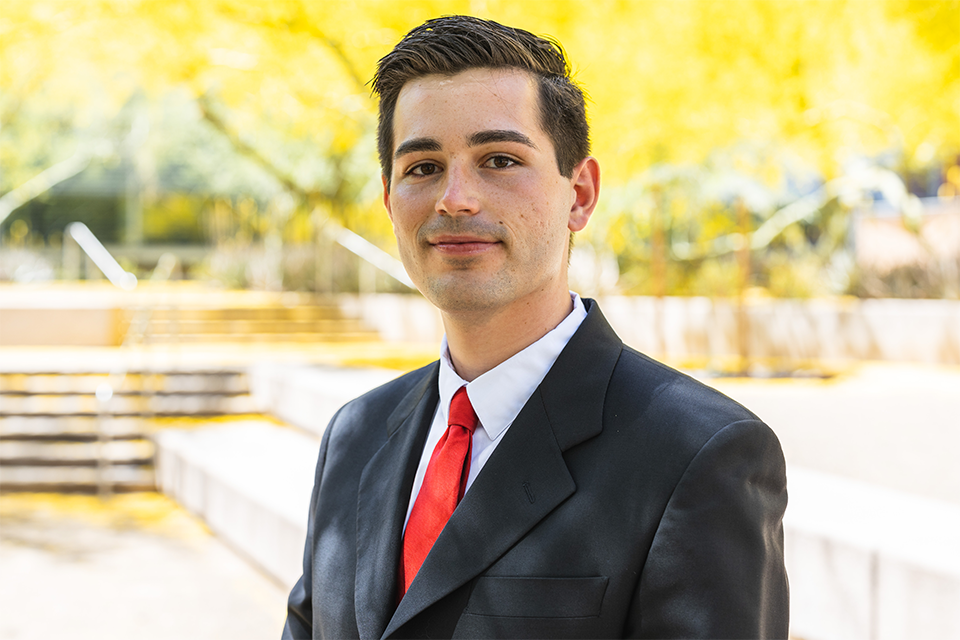
Dean’s Medal: Department of Economics
Majors: Economics, mathematics
Almeida is a Barrett student graduating summa cum laude this spring. During his time at ASU, he served as a peer tutor and teaching assistant and completed multiple research assistantships in the Department of Economics. He has been recognized as a student leader by the School of Mathematical and Statistical Sciences and is a member of Phi Beta Kappa.
Almeida studied abroad in India and Argentina, and interned at the Federal Reserve doing economic research. He helped direct an environmentally focused portfolio of over $1 million for ASU Enterprise Partners. In his free time, he works with the Gammage Scholars on community-based projects that have been featured in the State Press and tutors local students with RISE Tutoring.
Almeida will continue doing economic research for the next two years as a research fellow at Stanford University’s Graduate School of Business. He aspires to earn a graduate degree in economics to continue studying the role that financial markets play in human and environmental betterment.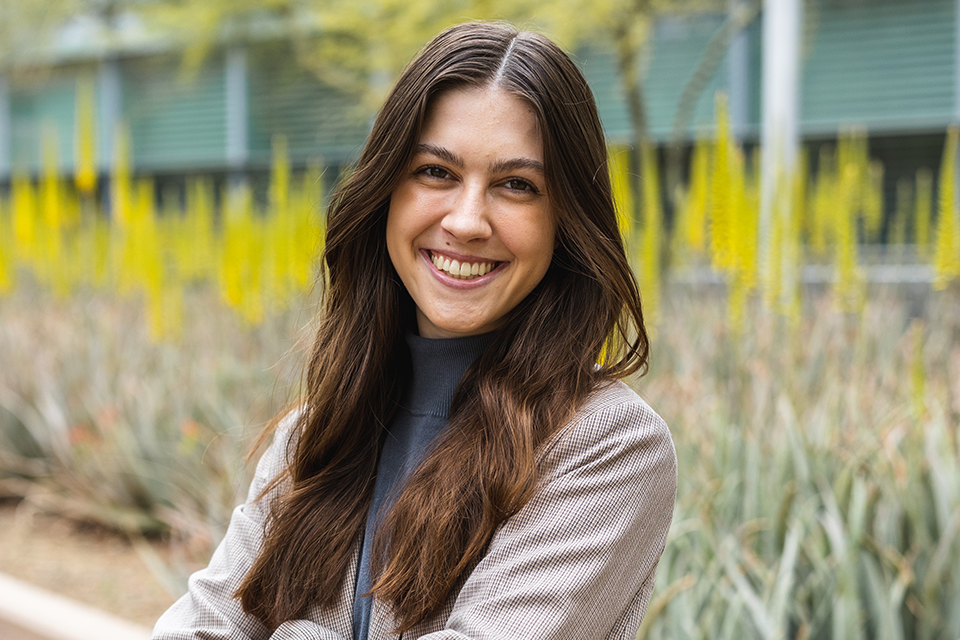
Dean’s Medal: Department of Psychology
Major: Psychology
Baron, a Barrett student, has a strong interest in understanding how people’s decisions and behaviors are informed by the environment that they are a part of.
During her time at ASU, she assisted in research on issues of social exclusion, social cognition as it relates to advice-giving, cross-sectional research about sexual consent behaviors and the adolescent stress on Latino youth. She served as a research assistant at the Evolution, Ecology, and Social Behavior Lab. She investigated the processes of social exclusion, explored how different situational pressures lead to different behavioral responses, and analyzed how individuals’ environments influence how they define diversity.
Outside of the lab, she volunteered as a crisis counselor at Crisis Text Line, served as a coordinator for the GLSEN Phoenix chapter and was an attendant care provider at Arion Care Solutions.
After graduating, Baron plans on furthering her education at the University of California, Santa Barbara in the fall to pursue her PhD in social psychology.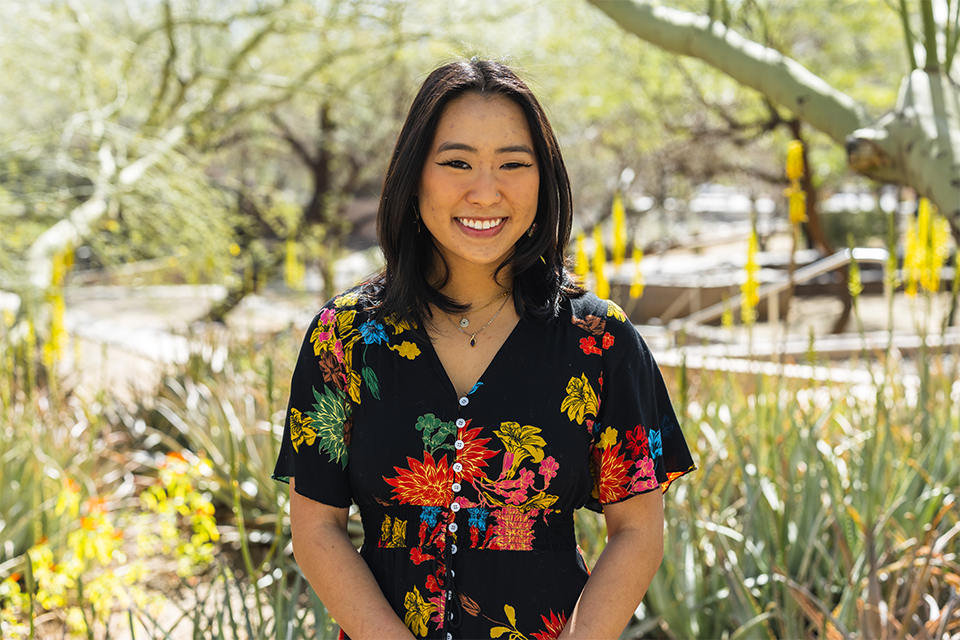
Dean’s Medal: School of Social Transformation
Majors: Asian Pacific American studies, psychology
Minor: Social welfare
Beccard is an honors student who is passionate about her work on Korean adoptees, with a focus on helping to create better policies for Asian transracial adoptees and their families.
She has worked as an undergraduate research assistant in two labs — the Yoo Research Lab, where she worked to understand more about literature on the racial and ethnic identity of Asian Americans, and the Perception, Ecological Action, Robotics and Learning Lab, where she analyzed how sensory touch and time perception are correlated. She is also an executive director and tutor for the Refugee Integration, Stability and Education (RISE) organization, where she oversees and manages four tutoring sites.
After graduation, Beccard plans to move to Washington to pursue a master’s degree in social work at the University of Washington.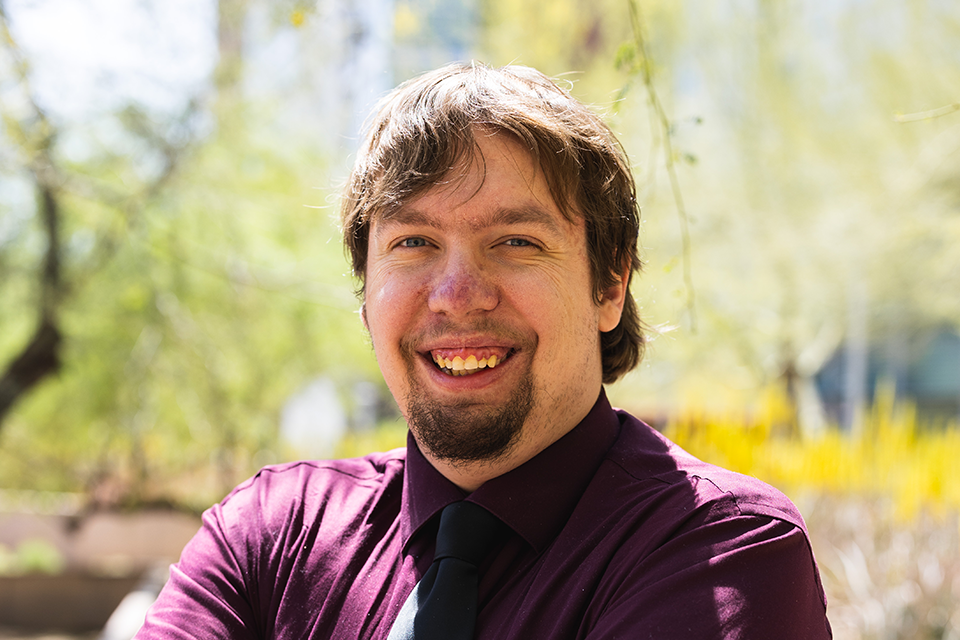
Dean’s Medal: Department of Physics
Major: Physics
Minor: Mathematics
Byrd is a Barrett student interested in exploring physics education and student misconceptions in the mathematics of physics.
At ASU, he assisted in the construction of electrodes for neural stimulation at the Neural Microsystems Laboratory and helped Associate Professor David Meltzer to analyze the results of over 8,000 diagnostic surveys to better understand the confusion that afflicts students in physics courses.
Byrd has worked as a tutor for Coconino Community College and an undergraduate learning assistant for the Department of Physics, where he developed and led structured review sessions for students outside of class.
After graduation, he plans to pursue a PhD in physics at Michigan State University with an emphasis on physics education research.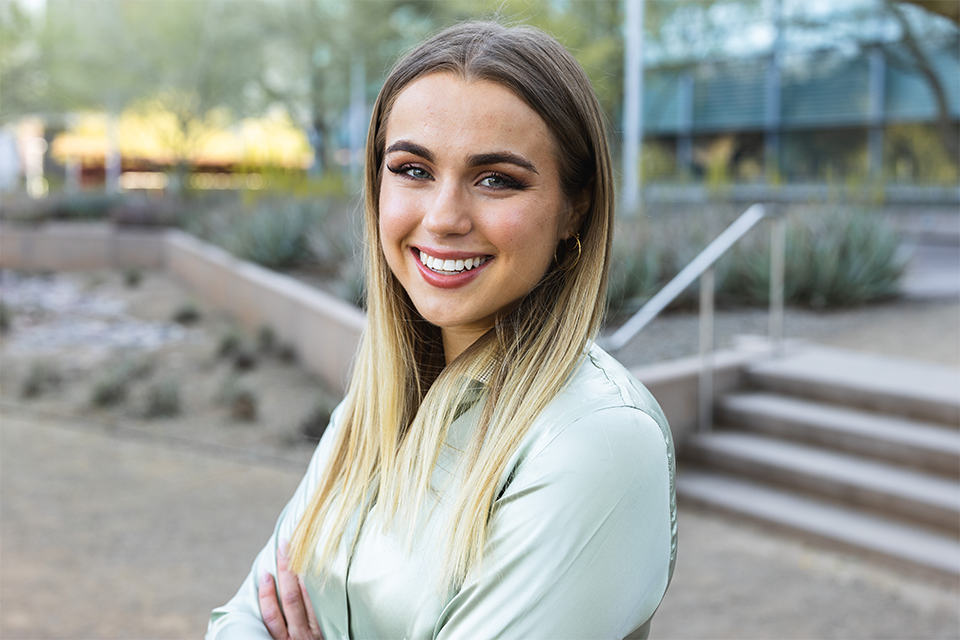
Dean’s Medal: School of Politics and Global Studies
Major: Global studies
Minor: Spanish
DeConcini, a Barrett student, is a Virginia native who lived in Tucson, Arizona, who has an interest in environmental equity.
During her time at ASU, DeConcini completed an internship with the office of U.S. Sen. Mark Kelly, where she assisted with constituent communication, casework and research. She has been appointed a Barrett Fellow with ASU’s Office of Gender-Based Violence and has been a content creator and legal board member for the Foreign Policy Youth Collaborative.
DeConcini is pursuing her master’s in sustainability at ASU in the fall. After she completes the two-year program, she hopes to take a few years off to travel and work, and eventually return to school.
Dean’s Medal: Department of English
Majors: Philosophy, English, sustainability
Minor: Sociology
Certificates: Environmental humanities, environmental education, social science research methods
Encinas, a Barrett student, has a passion for exploring the capabilities of interdisciplinary studies to generate new solutions to systemic issues.
Encinas has taken on numerous research and internship opportunities. One is theirEncinas uses they/their pronouns. current position as a research apprentice for the Arizona Youth Identity Project, where they work to gain a better understanding of how young adults in Arizona conceptualize Americanism and how recent social changes affect their understanding of their belonging and national identity.
Encinas has left a lasting impact at ASU as they founded the student organization Climbing Vines. In addition, they have been awarded the Pitchfork Award for Emerging Student Leader due to their various leadership roles as vice president of The Faithful City, director of operations of the Sustainability Alliance, president and recruitment officer for the Honor Society for Sustainability and co-chair of the Sustainability Advocacy and Advisory Board.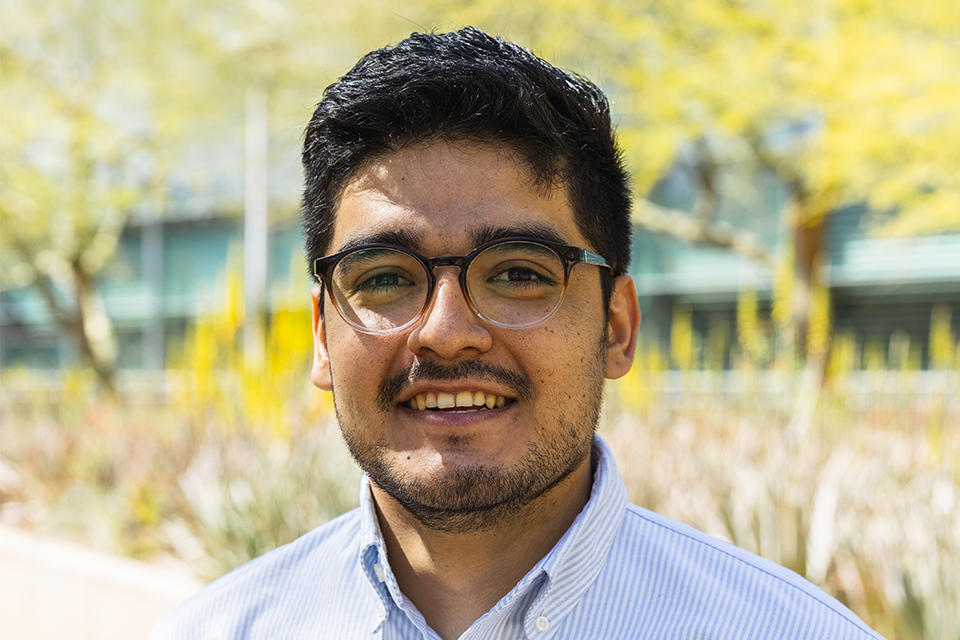
Dean’s Medal: School of Molecular Sciences
Major: Chemistry
Flores is a first-generation student who has an interest in forensic analysis and quantum computational chemistry.
Since transferring to ASU from community college, Flores has served as a student researcher in the Anbar/METAL supergroup. As an advanced researcher, he contributes to research involving isotopic analysis for trace metals in bullets for forensic investigation. He also wrote grant applications to the American Academy of Forensic Science and gave a presentation at the 2022 Winter Conference on plasma spectrochemisty.
After graduation, Flores aspires to get a PhD in computational chemistry and pursue a career in field service engineering.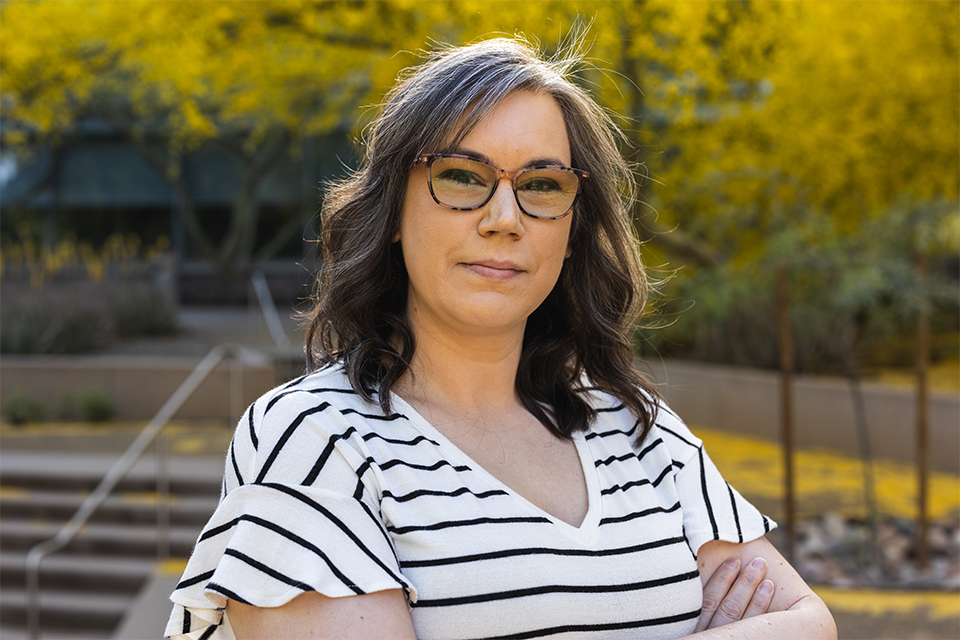
Dean’s Medal: School of Geographical Sciences and Urban Planning
Majors: Geographic information science, anthropology
Minor: Art history
Harvey is a first-generation student who has an interest in archeology, spatial analysis and data management.
Harvey’s knowledge of tools such as Python programming, Geographically Weighted Regressions and the complexities of the open source have allowed her to conduct exceptional research. This research includes creating a new ceramics database, thus introducing a new source for use in other archaeological research.
Her post-graduation plans entail taking some time to gain work experience in GIS and cultural resource management, and then pursuing a master’s degree in digital archaeology.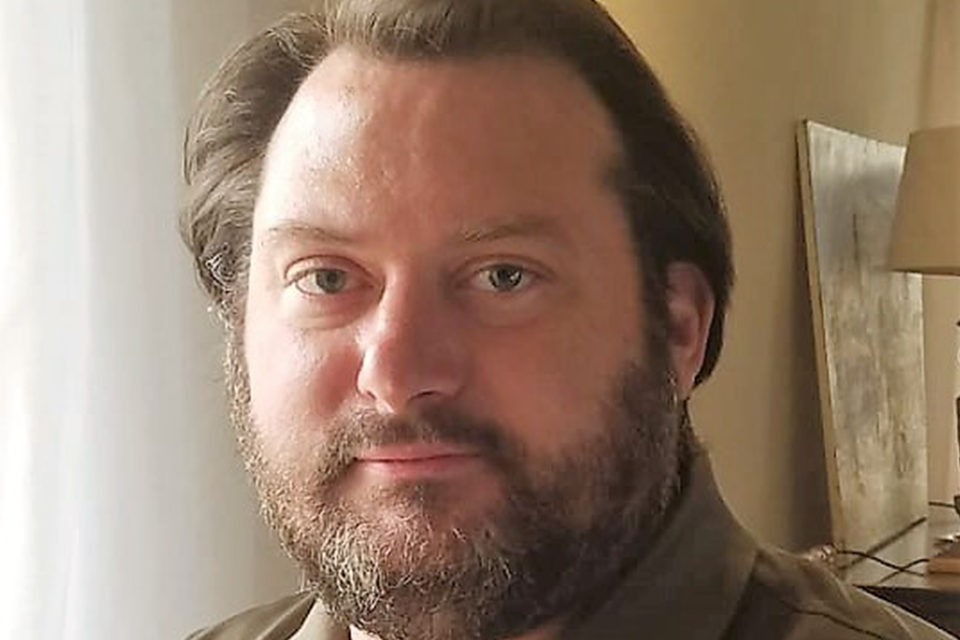
Dean’s Medal: School of Historical, Philosophical and Religious Studies
Major: Religious studies (religion, culture and public life)
Herald is a U.S. Navy veteran currently working as a foreign service specialist for the U.S. State Department that has returned to further his education through ASU Online.
Herald, driven by his academic interest in religion, American politics and culture, has conducted undergraduate research that evaluates Pastor Greg Locke’s public theology. He then relates that to the empirical research on Christian Nationalism by sociologists Andrew L. Whitehead and Samuel L. Perry.
After graduation, he plans to pursue graduate education in religious studies with the long-term goal of teaching the subject.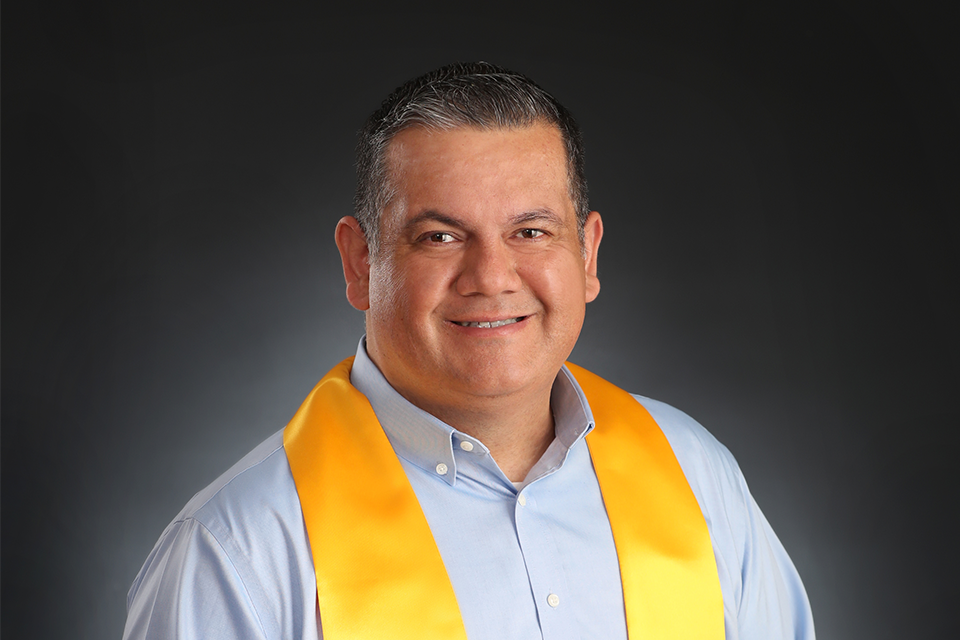
Dean’s Medal: T. Denny Sanford School of Social and Family Dynamics
Majors: Sociology, Spanish
Certificate: Teaching English to Speakers of Other Languages (TESOL)
Hernandez is a first-generation student and father who sought to advance his education through ASU Online.
Hernandez served as the president of the ASU chapter of Alpha Kappa Delta, a sociology honors society. He helped revive the society as he rallied faculty to reinstate it, with the chapter now growing to over 40 student members.
After graduation, Hernandez plans to earn a master’s degree in education for TESOL. His long-term goal is to directly impact the lives of those that come to the U.S. in search of better opportunities.
Dean’s Medal: School of Transborder Studies
Majors: Biomedical science, global health, transborder Chicano/a and Latino/a studies
Minors: Health innovation
Certificates: Human rights, interdisciplinary health humanities
Hernandez Salinas, a Barrett student, is motivated to combine his passions for medicine and community involvement.
During his time at ASU, Hernandez Salinas took on five internships, two major volunteer opportunities and has assisted with research at the Genes, Environment and Youth Development laboratory. He worked more than 500 hours volunteering at Phoenix Allies for Community Health, where he assisted with clinical flow and COVID-19 vaccine distribution.
After graduation, he will attend the College of Medicine at the University of Arizona. He plans to complete a master’s degree and work with marginalized communities to address health inequities through nonprofit work, health policy and health equity research.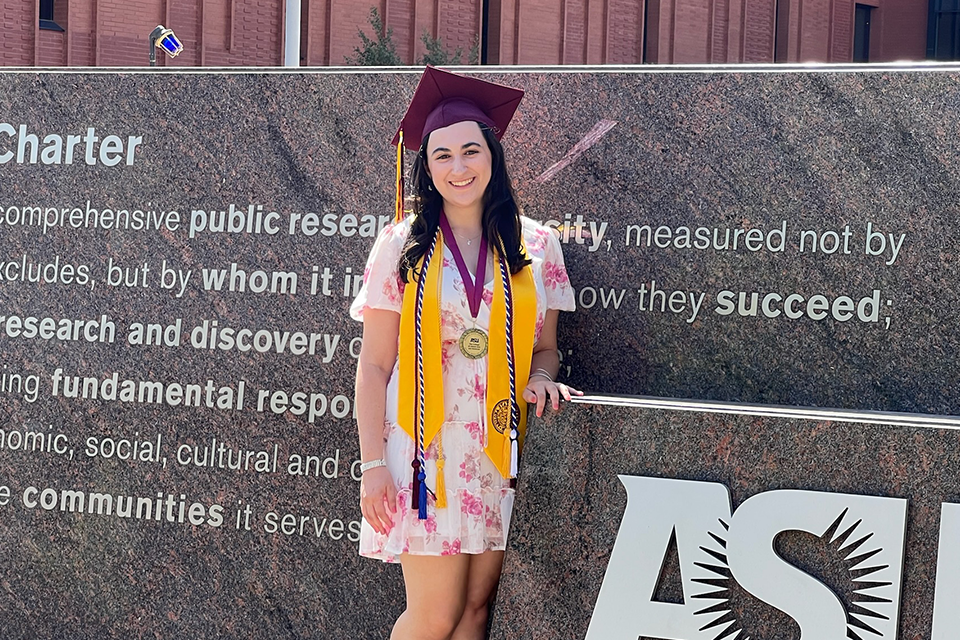
Dean’s Medal: School of Human Evolution and Social Change
Major: Global health
Certificates: Public administration and public management
Lederman is a Barrett student who has a passion for global health and merging academia and public service.
Since her freshman year, she has been the co-president of the Global Health Student Association. In addition, she has played a significant role as a COVID-19 case investigator for ASU’s Student Outbreak Response Team and had research positions at both the Children in the Law Laboratory and the COVID-19 and Racial Health Disparities Lab.
After graduation, she will continue her education at the Colorado School of Public Health, where she will pursue a master’s degree in public health in health systems, management and policy.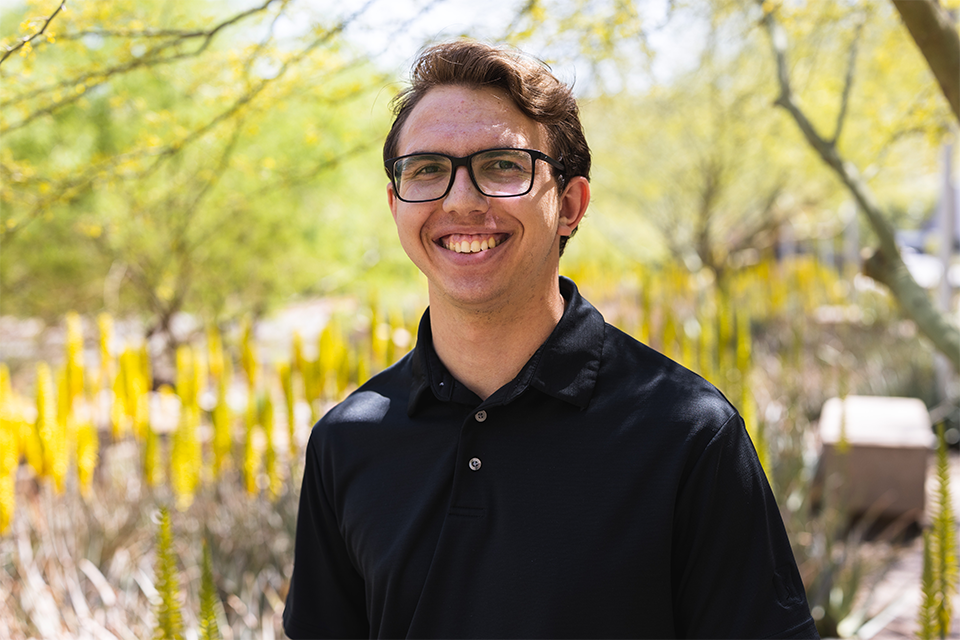
Dean’s Medal: School of Mathematical and Statistical Sciences
Major: Mathematics (statistics)
Lindstrom, a Barrett student, has a passion for statistical science, organization and data analytics.
Lindstrom’s goal for his honors thesis project was to use statistics to be able to predict what makes collegiate sports teams successful. As a result, he created a model that predicts the results of Pac-12 college football games.
He also held a student worker position at the W. P. Carey School of Business. As a data analyst, he assisted on a modeling project meant to help predict what factors go into the ranking of the business school across a variety of degrees and publications.
After graduation, he will continue his Sun Devil journey and return to ASU to complete an accelerated master’s degree in statistics.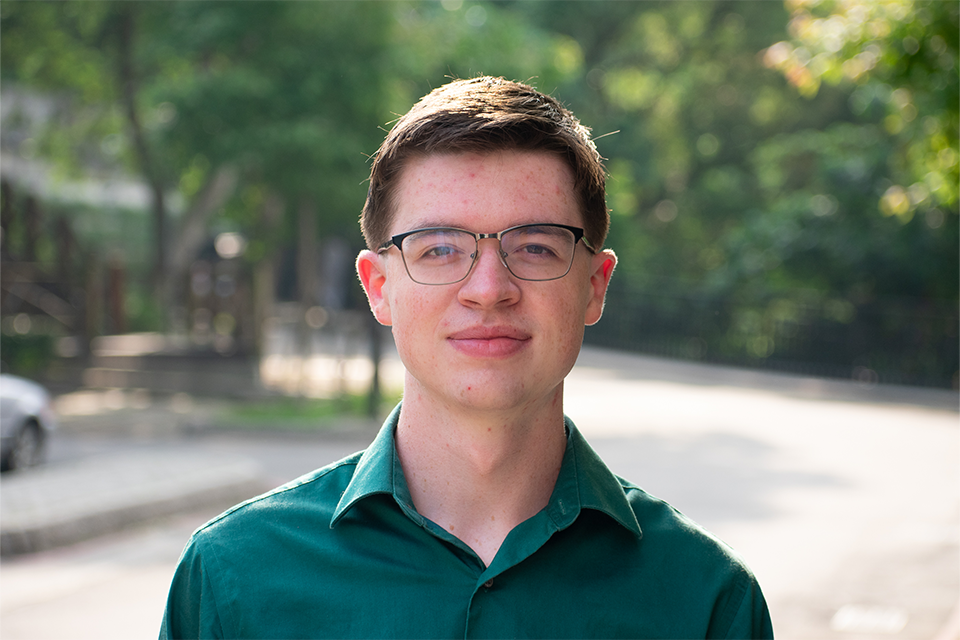
Dean’s Medal: School of International Letters and Cultures
Major: Asian languages (Chinese)
O’Hara is a midshipman of the ASU Naval Reserve Officers’ Training Corps and a scholar of the Chinese Language Flagship Program — a proficiency-driven undergraduate language training program funded by the Department of Defense.
When he first came to ASU, O’Hara was driven by his passion for language and cultural studies. Despite his schedule as a midshipman, O’Hara still excelled academically. By his third year at ASU, he had already attained a solid advanced mid- to high-level of proficiency in his Chinese skills.
After graduation, he aims to become a foreign area officer in the Navy and contribute to regional and global security. 
Dean’s Medal: Hugh Downs School of Human Communication
Major: Communication
Minors: Public service and public policy, justice studies
Certificate: Civil communication
Soto entered ASU as a first-generation college student. He is a Barrett student, a legislative intern and served as a page for the Arizona House of Representatives. As an intern with the Congressional Hispanic Caucus Institute (CHCI), he advocated for legislation such as affordable housing incentives to help Arizonans in need.
Soto volunteers as a basketball coach for the city of Tempe, working with kids at summer camp and as a tutor for the Refugee, Integration, Stability and Education (RISE) organization.
Marketing assistant , The College of Liberal Arts and Sciences
[email protected]
To make new discoveries, scientists are perpetually in need of shedding just a little bit more light on a given subject. When applied to high energy physics, this becomes a literal endeavor — by making the brightest electron beams possible to aid in discoveries to advance science, medicine and industry.These bright beam insights promise to improve the performance and reduce the cost of accelerat…
To make new discoveries, scientists are perpetually in need of shedding just a little bit more light on a given subject. When applied to high energy physics, this becomes a literal endeavor — by making the brightest electron beams possible to aid in discoveries to advance science, medicine and industry.
These bright beam insights promise to improve the performance and reduce the cost of accelerator technologies around the world and develop new research instruments that transform the frontiers of biology, materials science, condensed matter physics, particle physics and nuclear physics, as well as new manufacturing tools that enable chip makers to continue shrinking the features of integrated circuits.
Recently, the Center for Bright Beams was awarded a $22.5 million renewal grant from the National Science Foundation to continue gaining the fundamental understanding needed to transform the brightness of electron beams available to science, medicine and industry.
“The award will be to study the detailed processes by which electrons are emitted from materials and develop novel materials to obtain the brightest possible electron beams for various electron microscopy and particle accelerator applications,” said Siddharth Karkare, an assistant professor in Arizona State University’s Department of Physics.
Karkare currently serves as the theme coordinator of the Beam Production Research Theme at the Center for Bright Beams, which is located at Cornell University.
The goal of Siddharth Karkare’s research is to develop novel materials to obtain the brightest possible electron beams for various electron microscopy and particle accelerator applications.
Karkare’s portion of the renewal award will be approximately $1.25 million, adding to $1.5 million in funds from his previous Center for Bright Beams award.
“The development of brighter electron beams will enable new imaging modalities in electron microscopy, for example, being able to observe atoms and molecules in motion and detecting the vibrational states of individual atoms, greatly revolutionizing our understanding of materials,” Karkare said.
The Center for Bright Beams, an NSF Science and Technology Center, was created in November 2016 with an initial $23 million award to Cornell and partner institutions, including: Arizona State University; Brigham Young University; Northern Illinois University; University of California, Los Angeles; University of Chicago; University of Florida; University of New Mexico; Fermi National Accelerator Laboratory; Lawrence Berkeley National Laboratory; and SLAC National Accelerator Laboratory; as well as affiliates at other institutions.
“Currently, all of these scientific and industrial instruments are limited by the brightness of their beams,” said Ritchie Patterson, director of the Center for Bright Beams.
“The (Center for Bright Beams) is the only center in the world that brings together an interdisciplinary approach to address critical challenges limiting accelerator science. This renewed funding will help us build on our successes to date, which have benefited enormously from our collaborative approach,” Patterson said.
For more than a century, major advances in physics, chemistry and biology have resulted from scattering, imaging, spectroscopy and colliding beam experiments. But in order to see something new, scientists must always do something new. These bright beam experiments are now becoming increasingly dependent on time-resolved information, which allows for such things as true movies to see, for the first time, molecular machines at work.
A few years ago, Karkare was first attracted to join ASU because of its ever-deepening commitment to X-ray laser science, including the completion, validation testing and first experiments of the Compact X-ray Free Electron Laser (CXFEL) labs at ASU’s Biodesign Institute. The CXFEL promises to be a first-of-its-kind, compact X-ray technology with potential applications in medicine, the “green” renewable energy economy, getting to the heart of matter, the computer industry and beyond.
“For particle accelerators, brighter electron beams can result in the development of compact X-ray sources, greatly reducing the cost of these km-scale machines, and allow the development of more efficient particle colliders used for studying the basic sub-atomic building blocks of matter,” Karkare said.
Examples of other cutting-edge methods dependent on advances in particle beams include beams for tumor treatment, electron microscopes capable of imaging individual atoms, instruments for wafer metrology and the Large Hadron Collider.
However, often the research and discoveries of one scientist have far-lasting implications to the work of another, and an open and collaborative approach — not to mention the technology to make it possible — has the potential to advance technological discoveries at a much faster rate.
Karkare has been an assistant professor in the Department of Physics since 2018. Prior to that, he completed a postdoc at Lawrence Berkeley National Lab from 2015–18 with Howard Padmore, where he continued his research and further developed his interest in accelerator physics — particularly as it combines with nanoscience. And Karkare is very familiar with the Center for Bright Beams faculty, completing his PhD in physics at Cornell University, studying mainly under the advisement of Professor Ivan Bazarov.
Now, he wants to pay it forward by also educating future scientists in electron beam technology.
Centers like the CXFEL labs at ASU and the Center for Bright Beams serve as a beacon to bringing experts from varied fields and universities from all around the country to share their discoveries and work toward new ones. Because the study of physics frequently centers on such highly specified areas and materials, some researchers can spend 15–20 years on the study of one facet of the discipline.
The Center for Bright Beams is organized into three interdependent research themes related to beam production, acceleration, dynamics and control. These themes combine to focus on the creation of smaller, brighter electron beams.
The NSF Science and Technology Centers: Integrative Partnerships program supports innovative, potentially transformative research and education projects that require large-scale, long-term awards. The centers foster cutting-edge research, education of the next generations of scientists, and broad distribution of the knowledge and technology produced.
Since 2016, Center for Bright Beams’ research has resulted in an electron source with 10 times smaller size and divergence than common sources in use today. This will open new pathways for drug design by allowing biologists who study the structure and dynamics of single molecules to reduce their data collection time by 90%.
The center has also created new methods for beam acceleration that match today’s performance but are vastly simpler to operate. the center’s high-field Superconducting Radio Frequency cavities will cut the construction costs of the largest accelerators by up to billions of dollars by reducing the length of tunnels and the number of cavities. Relaxed cavity operating temperatures will simplify cryogenics, making beams more accessible to universities and industry, or “a beam in every basement.”
With roughly 30,000 industrial and medical accelerators in use today, and annual sales of $3.5 billion, the future promises to be brighter yet.
This story was written with contributions from Dominique Perkins at ASU’s School of Life Sciences and Rick Ryan at Cornell University.
Top photo: A photoemission experiment on cryogenically cooled copper — a material used to make electron beams for photocathodes.
Manager (natural sciences) , Media Relations & Strategic Communications
480-727-4858 [email protected]
Contact us





